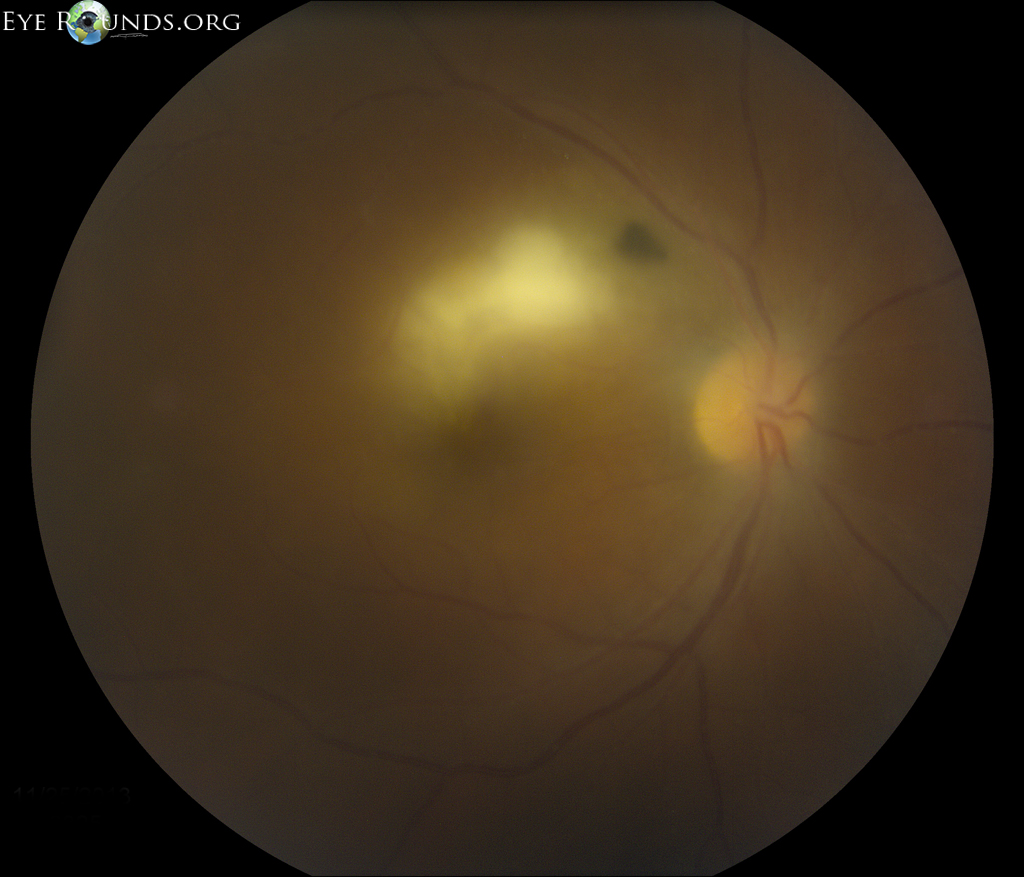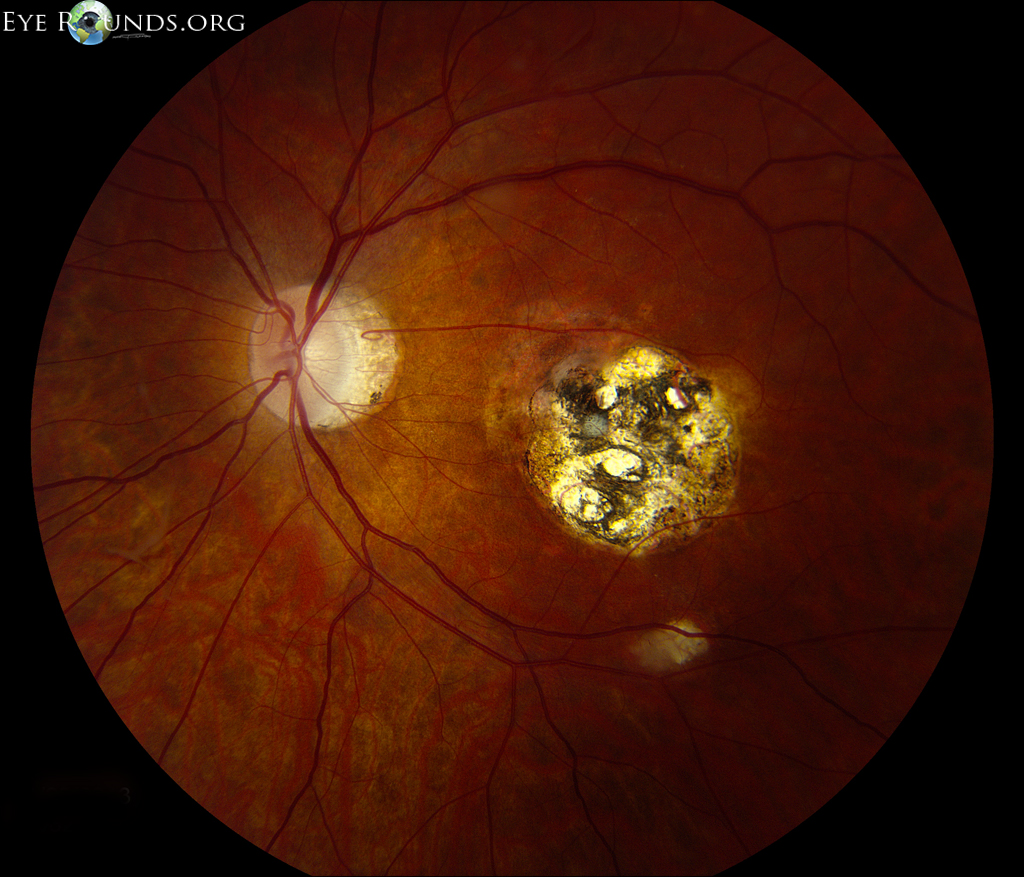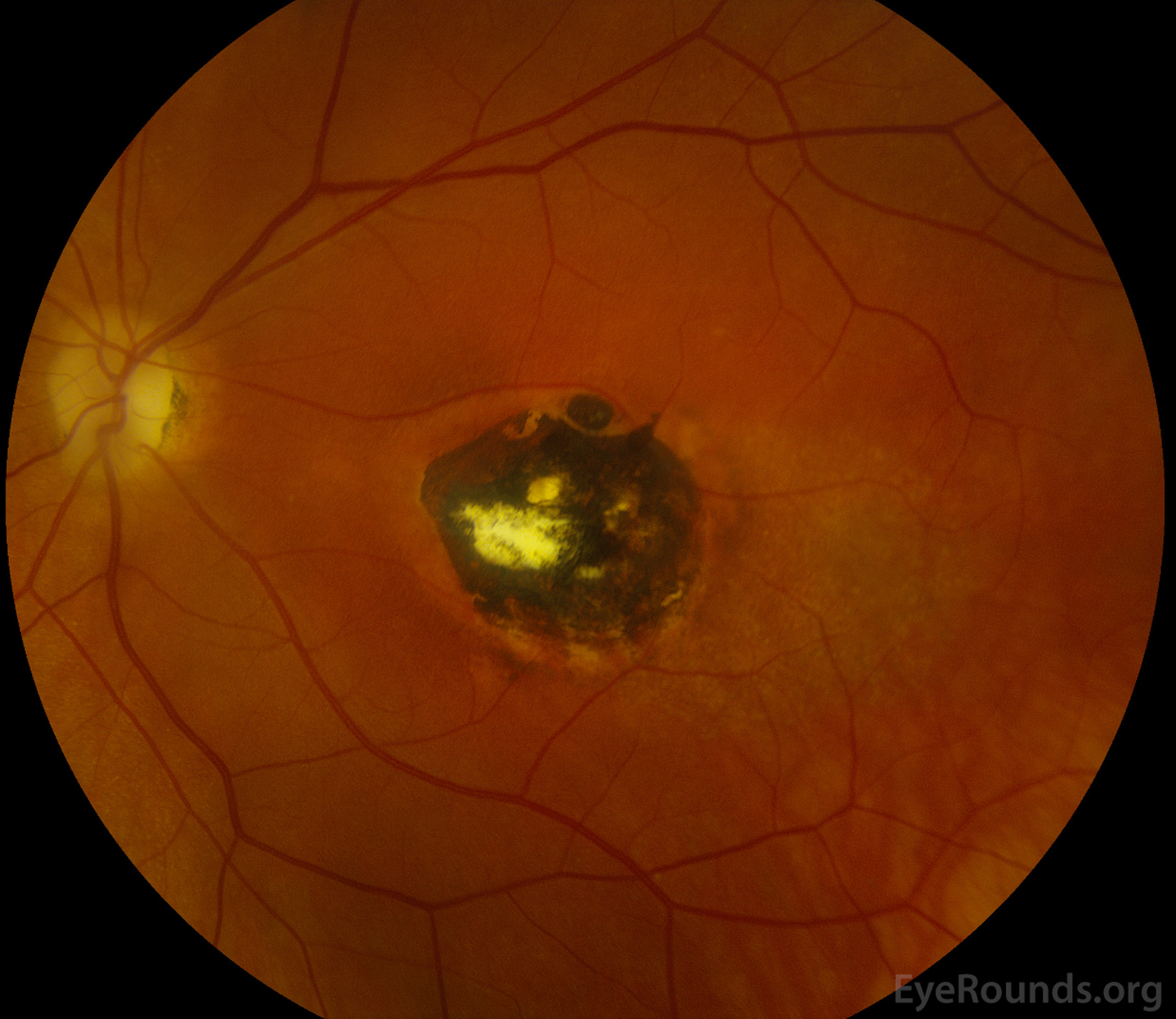
Toxoplasmosis is the most common cause of posterior uveitis. Active lesions have a classic "headlight in fog" appearance with a focal, white, fluffy lesion adjacent to an old scar visible through the associated granulomatous uveitis and vitritis as seen in Figure 1. Inactive lesions appear as a chorioretinal scar in the posterior pole, often within the macula as seen in Figure 2.




Ophthalmic Atlas Images by EyeRounds.org, The University of Iowa are licensed under a Creative Commons Attribution-NonCommercial-NoDerivs 3.0 Unported License.